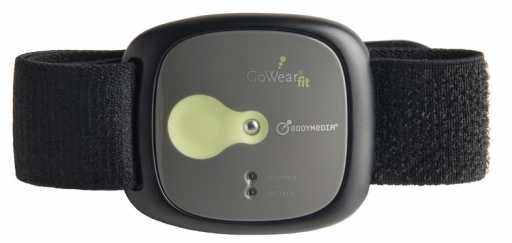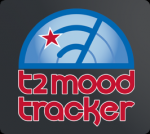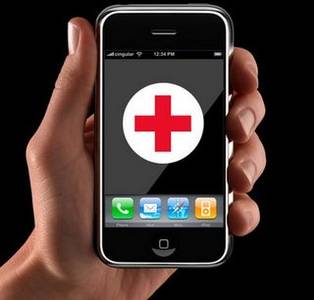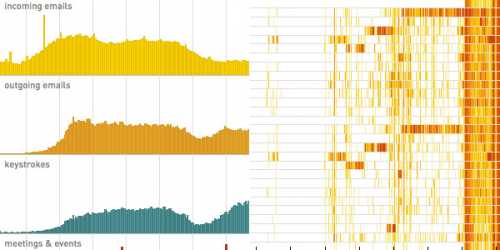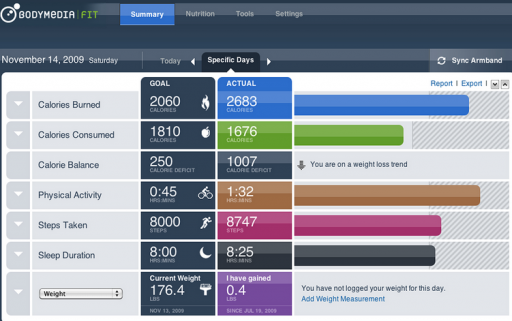The convergence between ubiquitous computing and wearable microsensors is enabling a new trend in human-computer interaction: “self-tracking”. In general terms, self-tracking refers to the measurement of data about the self, through personal informatics tools. Data collected can be aggregated, visualized, collated into reports and shared. For example, by wearing a small sensor wirelessly connected with a smartphone, a runner can automatically track distance, speed, calories burned and share her performance on the web. But virtually any aspect of one’s life can be potentially registered, at the biological, behavioral or contextual levels. Programs already exist to monitor blood pressure, heart rate, pain, happiness, mood, and location, just to name few examples.
Conceptually, self-tracking is not a new idea. Since the invention of writing, human beings have used different tools to record daily life (i.e. the diary). However, the emergence of pervasive computing tools has made this process easier. In addition, the increasing memory capacity of portable media devices allow to store massive amounts of personal data, making it possible to record an entire life of events.
This is the idea behind MyLifeBits, a project by Microsoft’s Media Presence Research Group, which has created a system able to digitally chronicle every aspect of a person's life. The development of this “lifetime personal store” was possible thanks to the perseverance of Gordon Bell, a Microsoft’s senior researcher and computer scientist, who for eleven years has captured every moment of his personal and professional lives. Bell’s experiment was inspired by the Memex system, a “configurable storehouse of knowledge” envisioned by engineer Vannevar Bush as early as 1945. The database created by Bell includes articles, books, correspondence, photos, telephone calls, video files, web pages visited and is completely searchable. Another pioneer of “life-logging” is Steve Mann, a tenured professor at the Department of Electrical and Computer Engineering at the University of Toronto, who in 1994 started continuously transmitting his everyday life 24 hours a day, 7 days a week on his website: visitors could see what Mann was looking at, as well as communicate with him in real time.
But besides the intriguing idea of logging one’s life, what is the real promise of self-tracking? Personal informatics offers the possibility to store and access data from our daily life and improve self-knowledge. Insights gained by performing these measurements can be used, for example, to change life-threatening habits, adopt healthier lifestyle, or take more informed treatment decisions. This is why a growing number of websites offer services to track and compare health data. For example, CureTogether allows users to anonimously track various health measures (including symptoms, treatment plans and medication schedules) and share them with other individuals having the same conditions. Aggregated data can be then analyzed to identify trends and eventually highlight the most effective treatments. The founder of the website, Alexandra Carmichael, is herself a self-tracker. She reported monitoring more than 40 different categories of information about her health and personal habits, from caloric intake to daily mood.
The potential of self-tracking has not been overlooked by psychologists. Conceptually, this approach was developed by Mihaly Csikszentmihalyi and Reed Larson in 1983, much before the advent of personal informatics. They created a paper-and-pencil methodology, called Experience Sampling Method (ESM), which requires participants to fill out multiple brief questionnaires about their current activities and feelings by responding to random alerts throughout the day. ESM has been used effectively with adolescent and adult populations for decades to understand areas such as mood, social interactions and time use. This approach has also proven to be helpful in defining therapeutic interventions that are optimally suited for an individual patient.
Used in combination with physiological and contextual measures, computerized version of the ESM may provide a powerful tool to study person-environment interactions. Researchers interested in experimenting with this approach, but lacking programming skills, can use MyExperience, a BSD-licensed open source mobile data collection tool developed for Windows Mobile devices. MyExperience allows the combination of sensing and self-report to collect both quantitative and qualitative data on experience and activity. The beta release of MyExperience supports 50 built-in sensors including GPS, GSM-based motion sensors and device usage information. The sensor events themselves can be used to trigger custom actions such as to initiate wireless database synchronization, send SMS messages to the research team and/or present in situ self-report surveys. Other external sensors (i.e. physiological) can be added via MyExperience plug-in architecture. MyExperience can also be used for designing innovative cybertherapies. For example, Dr. Margaret Morris from the Digital Health Group at Intel and colleagues from Oregon Health and Sciences and Columbia University have recently developed and tested a mobile phone application for mood reporting, which also provides therapeutic exercises for cognitive reappraisal and physical relaxation (M. E. Morris et al, Mobile Therapy: Case Study Evaluations of a Cell Phone Application for Emotional Self-Awareness, Journal of Medical Internet Research, 12(2):e10, 2010).
In summary, self-tracking is an emerging trend in personal informatics, with potentially interesting applications in the fields of cyberpsychology and cybertherapy. However, more research is needed to determine the real benefits (and risks) of this approach.
More to explore:
- Physiological Computing is a blog run byrun by Stephen Fairclough and Kiel Gilleade aimed at providing the latest news and research in the field of physiological computing.
- The Quantified Self is a group engaged in self-tracking activities started by Kevin Kelly and Gary Isaac Wolf. The group also organizes meetups around the world.
- Patients like Me is a social networking health site that enables its members to share treatment and symptom information in order to track and to learn from real-world outcomes.
- The Body Computing Conference is an international conference devoted to the nascent field of physiological computing.
- PsychLog is an open source, smartphone-based experience sampling tool that allows to collect psychological, physiological (via wireless ECG) and behavioral activity data (from wireless in-built accelerometer).
